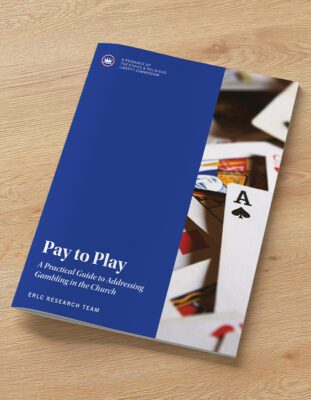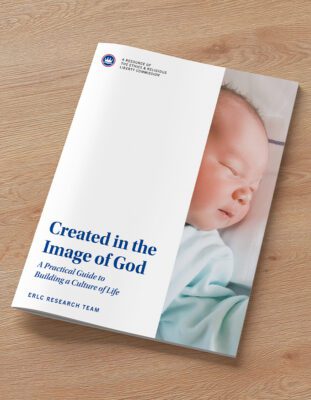The odds are increasing that you know someone (if not multiple people) who identifies as part of the “nones” of religion, whether that is someone who identifies as an atheist, agnostic, or nothing in particular. According to multiple studies, the nones make up one of the largest segments of religious America and are the fastest growing religious demographic, especially among young Americans. How can the church respond to this shifting religious landscape? Part of that response starts with understanding just what is going on.
In his new book, The Nones: Where They Came From, Who They Are, and Where They Are Going, social scientist and pastor Ryan Burge offers a detailed study of the nones in order to offer churches and ministry leaders the tools necessary to understand and minister to those who have given up on religion. Drawn from his years of research and data analysis, Burge provides an excellent and accessible resource for those seeking to understand both why the nones have grown so much in recent years and the variety within this large subgroup of Americans.
You spend the first part of the book introducing yourself and describing the relationship between your role as a professor and a pastor. How do you see those connected, and how does each inform the other in this book?
The impetus for writing the book was really a confluence of my work as both a pastor and a political scientist. I’ve been on the staff of three different American Baptist churches in rural Illinois. Two of them are substantially smaller today than they were a decade ago, and the third one has closed. I’ve seen it in the pulpit in my current church. When I began my work there in 2006, we had about 50 in the sanctuary on a good Sunday. Today, we are lucky to get 15. That makes you ask the big questions like: Why is this happening? And, can I do anything about it?
Luckily for me, I have the tools at my disposal to answer a lot of those queries in a fairly rigorous way. I’ve been digging into survey data about religion and politics for the last 15 years and have made a name for myself by publishing a lot of that analysis in a variety of outlets. It seemed like a worthwhile endeavor to focus my analytical lens onto the biggest story in American religion during my lifetime—the rise of the nones. I felt like I could help pastors understand what was happening in American society in a more neutral and nuanced way than they would be able to on their own.
In your discussion of religious affiliation, you describe “the three B’s: religious behavior, belief, and belonging. When looking at the rise of the “nones,” is there one of these that seems especially important?
For anyone who is a serious scholar of religion, the biggest question they face on a daily basis is foundational—how do we measure religion? Because if you really sit back and think about religion, it’s so incredibly multifaceted. The most widely accepted way to classify religious expression is the three B’s—behavior, belief, and belonging. Behavior is usually measured by how often someone attends religious services or prayers. Belief is typified by questions about theological matters like a person’s view of the Bible, belief in Heaven and/or Hell, or willingness to believe there is evil in the world. Belonging is more of a sociological approach. It focuses on who you are willing to associate with when you are asked about your present religion on a survey. Respondents are typically given a range of choices such as Protestant, Catholic, Mormon, Buddhist, or Atheist.
What’s interesting about the nones is that they seem to cast off the B’s in a pretty similar pattern. The first to go is almost always religious behavior. About a third of Americans say that they attend church less than once a year. That seems to be accelerating as the society has become less social and more digital. After behavior, the next one to fall by the wayside is clearly religious belonging. Today, about 30% of Americans indicate that they have no religious affiliation, and that has been climbing without any plateaus since the early 1990s. However, the last to leave is clearly religious belief. The GSS has been asking respondents about their belief in God since 1988, when just about 5% professed an atheist or agnostic worldview. In 2018, that had only climbed to about 11%. Even though about a third of Americans don’t behave or belong, 90% still believe in God at least sometimes. That says something about us as people—many of us still want to believe.
One of the examples you point to in the difficulty of measuring all of these changes is “social desirability bias.” You highlight one study of Ashtabula County in Ohio as a case study of this phenomenon. First, what is social desirability bias, and how does it affect the way that social scientists study religiosity? What does it reveal for pastors and ministers about the way their communities think of their own religious behavior?
Social desirability bias is the thing that keeps researchers up at night, especially those who study things that have a strong moral component like sexual behavior, drug use, racial attitudes, and church attendance. There is a well-documented reality that when people are asked on surveys about these types of behaviors, some of them lie. They want to make themselves look good in the eyes of the survey administration, which means they typically underreport drug use or sexual partners and overreport the rate at which they attend church. The study of Ashtablula County, Ohio,is a perfect example. On a survey, about 36% of respondents said they went to church weekly, but when researchers did a thorough check of the pews on a Sunday, attendance was only about 20%.
Because of social desirability bias, we can never be entirely sure what the true beliefs and behaviors are of the public we are trying to study. This, unfortunately, is not good news for pastors and denominational leaders because the reality is that the real rate of religious adherence, church attendance, and belief in God is probably overreported. We will never be able to determine how inaccurate our estimates are, but it’s well understood that the public is less religious than they want us to believe.
Looking at the declines and gains in the major traditions, some have pointed to theological differences as the only reasons for decline or maintenance, particularly in the Mainline denominations. Why is that narrative too simple? What other factors are contributing to the decline across the traditions?
Whenever I show the graph of the American religious landscape over the last 40 years, there are two lines that move dramatically. The nones were 5% of the population in 1972, and then they were 23.5% of the population in 2018 using the GSS calculation. However, the other big shift is among mainline Protestants. These are the more theologically moderate Protestant traditions like United Methodists and Episcopalians. They were 30% of the population in 1976. Today they are 10%.
It would be easy to say that the rise of the nones is easily explained—lots of mainline Protestants became nones. Except that’s much too simplistic. The data indicates that mainline Protestants have clearly had problems with retention for decades, but those who left that tradition were nearly evenly split between becoming evangelical or leaving religion all together. Under the surface, there’s a lot of turbulence in the religious marketplace. Nearly half of Americans raised in a specific Protestant tradition are not members of that denomination as adults. So, while many mainliners left to become nones, there were Catholics and evangelicals who also walked away from faith as well.
There is a fear that America (and other parts of the world) are secularizing and that this is inevitable? How is America like the European countries that have become “post-Christian?” How does it differ? What does this mean for the American religious landscape?
The problem with the United States from a social science perspective is that there’s not really a good comparison case to the rest of the world. Our closest neighbor socially and culturally is clearly western Europe. They are a region that can match us in terms of educational attainment and economic output, but they have a much different history with religion than the United States. Many European countries have a state religion, and lots of conflicts on the continent were fought for expressly religious reasons. In my estimation, both of those were bad for the health of religious institutions on the continent, and the data bears that out. In countries like Germany, France, and Sweden less than 10% of its citizens attend church on a weekly basis.
But, I think that there are clear reasons to think that the United States will not get to the same place as our European counterparts. While most European countries had (or still have) a state religion, the Founders were careful to ensure a strong separation of church and state. Also, the United States was fortunate to have a great deal of religious pluralism from its earliest days. Many colonies had a nice mix of Baptists, Methodists, Congregationalists and others even before the Revolution. And now, it’s not at all uncommon for a state’s largest religious tradition to only be 30% of the population. That pluralism seems to drive down religious resentment and may be one of the reasons that the United States is still so religious compared to Europe.
One phenomenon that appears to be starker in recent years is the relationship between political identity and religious behavior, and the growing “God gap.” Does a person’s political identity, whether by party or ideology, influence their religious identity, or is the reverse true? Are there any major outliers to this theory?
For decades, social scientists just assumed that the most important framework that people used in making political decisions was a religious worldview. This is something that any evangelical has heard about countless times from the pulpit. Christians should have the “mind of Christ” and take on a biblical worldview. However, there’s mounting evidence now that this is probably not the way that many Americans make decisions on who to support in elections. Michele Margolis’ recent book, From Politics to the Pews, makes a strong argument that politics is our primary framework, and everything else lies downstream of that—which means that we make decisions on where to go to church based on the politics of that congregation, not on theological considerations.
In the 21st century, the parties have become more polarized than ever before. And while most people only consider the political sorting that has occurred, they miss the fact that the parties have sorted on religious dimensions as well. For instance, just over half of the American public is white and Christian. Yet, 75% of the Republican party is white and Christian, and it’s only 38% of the Democratic party. Thus, to be a person of faith in the United States is increasingly becoming synonymous with being a Republican, and being a “none” almost automatically sorts you into the Democratic camp.
One interesting data point is the relationship between childbearing and a return to religion. How does the fact that people are delaying marriage and childbearing play into the story of the nones? Is it likely that these people will return even later in life?
There is a very popular concept in the social science world called the life cycle effect that has made its way into a lot of discussion of church growth over the last several decades. It works like this: when people are young, they are typically fairly religious. Their parents encourage them to be part of a youth group, and they attend camps, retreats, lock-ins, etc. However, when they move into young adulthood and move away for college, they drift from religion. This typically lasts until they get married and have children. Then, they want to replicate their own religious upbringing in their offspring and come back to more consistent church attendance.
In the book, I take a deep dive on that concept to see if that theory actually matches the data. Looking at trends in religious disaffiliation dating back to people born in the 1930s, I find that the life-cycle effect was especially prominent among the baby boomers. Many of them did come back to faith when they moved into their 30s and 40s. However, that’s no longer the case. The lines of disaffiliation are only pointing upward now as younger generations age. Even when they have children, they still drift away from religion. Pastors can no longer take for granted that the kids in their church may be gone for a while, but they will be back. Instead, many who leave never return.
The common perception of the nones is that they are a monolithic category of people, many of them resembling Christopher Hitchens or Richard Dawkins. Is this picture still relevant? How has the group changed in recent decades?
I hope that’s one of the biggest contributions I make in the book, to provide clear and compelling evidence that all nones are not the same. Social science considers three different groups under the umbrella of the nones—atheists, agnostics, and nothing in particular. Atheists make up about 6% of the population and agnostics are about the same size. However, nothing in particulars are over 20% of the population today. That makes them the same size as white Catholics or white evangelicals.
Their growth over the last decade is notable. In 2008, atheists made up 3.4% of the population and agnostics were just slightly larger at 4.5%. By 2019, atheists had nearly doubled in size to 6.6% and agnostics were 6.2%. However, the increase in the nothing in particular category is worth considering. They were 14.4% of the population in 2008 but had risen to 21.5% of the sample in 2019. That growth (7.1%) is larger than all the atheists in the United States today. There’s no religious group that is growing faster than nothing in particulars, yet very little attention has been paid to this group by scholars, pastors, or the media.
On that note, how is the category of nones a broad category? How are the three groups you highlight—atheists, agnostics, and nothing in particular—different from one another? Is one more open to outreach and religion?
To compare atheists to nothing in particulars is to see just how large the disparities are between the two groups. Forty-four percent of atheists have a four-year college degree, they are one of the most educated religious groups in the United States. Only 19% of nothing-in-particulars have a bachelor’s degree, which means they are the least educated group in the United States. Three-in-five nothing in particulars make less than $50,000 per year, and it’s only 40% of atheists.
Christians have seemed to make all the nones into atheists, when the data indicates that nothing-in-particulars are three times their size. Also, when you look at data surrounding religious switching, atheists are incredibly unlikely to ever return to a religious tradition, while about 20% of nothing-in-particulars come back to a religious tradition over a four-year period of time. Instead of making a boogeyman of atheists, churches would be a lot better served by focusing their efforts on reaching the nothing-in-particulars.
One of the final conclusions you make in the book is that spiritual interest hasn’t declined, but rather people’s willingness to take on the label of Christian, Muslim, Hindu. What are the important takeaways for how the church can minister in this new context? How will outreach and evangelism need to look different? How can churches keep “throwing out seed” as you encourage them in the final pages of the book?
When thinking about church growth, pastors would be well served by placing things into two categories: things that can be changed and things that cannot. The macro-level shifts in American society toward secularization can clearly not be held back. There’s just too much momentum now to think that it will not continue for the near future. Fighting against this is like trying to extinguish a forest fire with a garden hose. It’s just not a productive use of time.
However, there are things that pastors can do when thinking about the rise of the nones and the future of their church. I mention several in the book, but a big one is to listen to each none’s story about why they left the faith. I talk in broad generalities in the book, because that’s the nature of social science. But, if there are 60 million nones in the United States, there are 60 million stories of why people left religion behind. Some are deeply traumatic and involve abuse or neglect. Others are important theological debates about the nature of God and sin. But some are incredibly trivial like they were upset that the church moved the Sunday service up 30 minutes.
Listening to those stories without preconceived notions or judgment is a good place to begin. But the purpose of that dialogue should not be to convert, but instead to understand. At the end of the day, most people just want someone to really listen to them without an agenda. Churches have been failing at that for years and that’s only become more of a problem as many become hyper-focused on growth. A good conversation goes a long way to building bridges and forging bonds.










